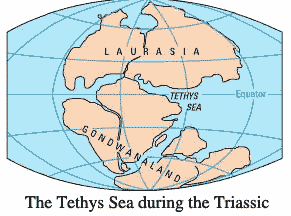Ask questions which are clear, concise and easy to understand.
Ask QuestionPosted by Susheel Saini 6 years, 8 months ago
- 3 answers
Yogita Ingle 6 years, 8 months ago
Cells are similar to small factories with different laborers and departments that work all the time to make life possible. Various kinds of cells perform different functions like protein synthesis and energy production.There are two major kinds of living organisms based on their cellular structure namely: prokaryotes and eukaryotes.
- Prokaryotes are made up of cells with no nucleus. They all are single-celled microorganisms including archaea, bacteria and photosynthetic blue-green algae which are also known as cyanobacteria.
- Eukaryotes consists of cells with a nucleus. This large category involves all plants, fungi (such as molds, yeast, and mushrooms), protozoa (Plasmodium falciparum and parasite that cause malaria) and animals. The plasma membrane is responsible for monitoring the transport of nutrients and electrolytes in and out of the cell and also responsible for cell to cell communication.
Posted by Semanti Bhowmik 6 years, 8 months ago
- 2 answers
Saireddy Vagdevi Vagdevi 6 years, 2 months ago
Gaurav Seth 6 years, 8 months ago
The elements which display properties of both metals and non-metals are classified as metalloids. In the Periodic Table, they separate metals from the non-metals. For eg. Silicon, Arsenic etc.
Posted by Uttam Debnath 6 years, 8 months ago
- 0 answers
Posted by Leo Leo 6 years, 8 months ago
- 2 answers
Lalati Kumar 6 years, 3 months ago
Gaurav Seth 6 years, 8 months ago
(a+b) ^2 means (a+b)*(a+b)
So (a+b)*(a+b)=a*(a+b) <i>+</i> b*(a+b)
On solving the brackets :
a*(a+b) <i>+</i> b*(a+b)
=(a*a) +(a*b) <i>+</i>(b*a) +(b*b)
=a^2 + ab <i>+</i> ba + b^2
=a^2 + 2ab + b^2
So, (a+b) ^2 = a^2 + 2ab + b^2
Posted by Susheel Saini 3 years, 10 months ago
- 0 answers
Posted by Saiyed Fardeen 6 years, 8 months ago
- 1 answers
Posted by Vel Murugan 6 years, 8 months ago
- 1 answers
Prince Gehlot 6 years, 7 months ago
Posted by Zubaida Khatoon 6 years, 8 months ago
- 1 answers
Vishal Saxena 6 years, 6 months ago
Posted by Pratik Yadav 6 years, 8 months ago
- 2 answers
Posted by Shivangi Jha 6 years, 8 months ago
- 0 answers
Posted by Bajrang Barik 6 years, 8 months ago
- 3 answers
Posted by Peeyush Srivastava 6 years, 8 months ago
- 2 answers
Peeyush Srivastava 6 years, 8 months ago
Posted by Puran Chand 6 years, 8 months ago
- 1 answers
Posted by Mridula Pipple 6 years, 8 months ago
- 0 answers
Posted by Pinky Singh 6 years, 8 months ago
- 0 answers
Posted by Mariya Tohfafrosh 6 years, 8 months ago
- 0 answers
Posted by Jeevan Sm 6 years, 9 months ago
- 0 answers
Posted by Madan Bxr 6 years, 9 months ago
- 2 answers
Posted by Madan Bxr 6 years, 9 months ago
- 2 answers
Posted by Ganesh Giria 6 years, 9 months ago
- 1 answers
Kashish . 6 years, 9 months ago
Posted by Ganesh Giria 6 years, 9 months ago
- 0 answers
Posted by Anita Khandelwal 6 years, 9 months ago
- 0 answers
Posted by Ankita Singh 6 years, 9 months ago
- 1 answers
Ankita Singh 6 years, 9 months ago
Posted by Ankita Singh 6 years, 9 months ago
- 1 answers
Gaurav Seth 6 years, 9 months ago
The Tethys Ocean, also called the Tethys Sea or the Neotethys, was an ocean during much of the Mesozoic Era located between the ancient continents of Gondwana and Laurasia, before the opening of the Indian and Atlantic oceans during the Cretaceous Period.
Posted by Yogesh Jatale 6 years, 9 months ago
- 0 answers
Posted by Vandana Nakhate 6 years, 9 months ago
- 1 answers
Mastermind . 5 years, 5 months ago
Posted by Md Shahir Ali 6 years, 9 months ago
- 3 answers
Posted by Rishanth Mahi 6 years, 9 months ago
- 0 answers
Posted by Kumud Jaiswal 6 years, 9 months ago
- 1 answers
Yogita Ingle 6 years, 9 months ago
The ‘Green Revolution’ was introduced in India, in the late 1960s. Indian farmers used it for the production of major food crops like wheat and rice. They made use of the High Yielding Variety seeds, which produced much greater yield than the traditional seeds. However, they needed plenty of water, chemical fertilisers and pesticides to produce best results.
Posted by Yogesh Jatale 6 years, 9 months ago
- 0 answers

myCBSEguide
Trusted by 1 Crore+ Students

Test Generator
Create papers online. It's FREE.

CUET Mock Tests
75,000+ questions to practice only on myCBSEguide app
 myCBSEguide
myCBSEguide
Samrat Yaduvanshi 6 years, 3 months ago
0Thank You